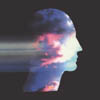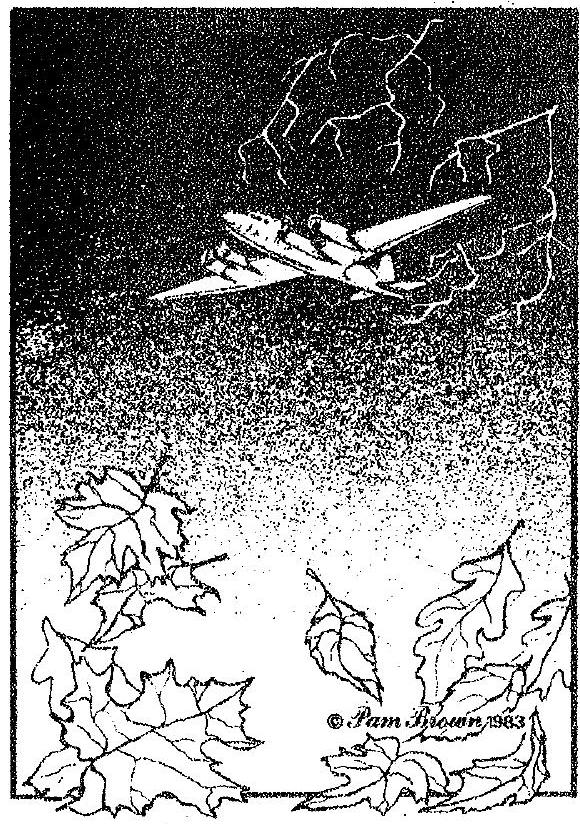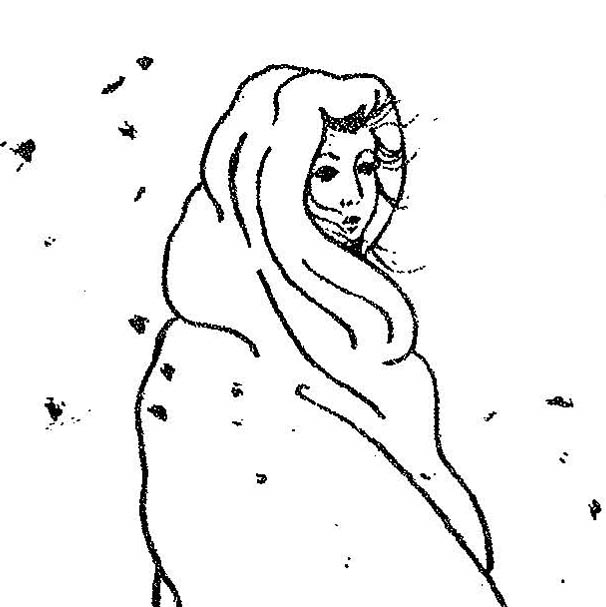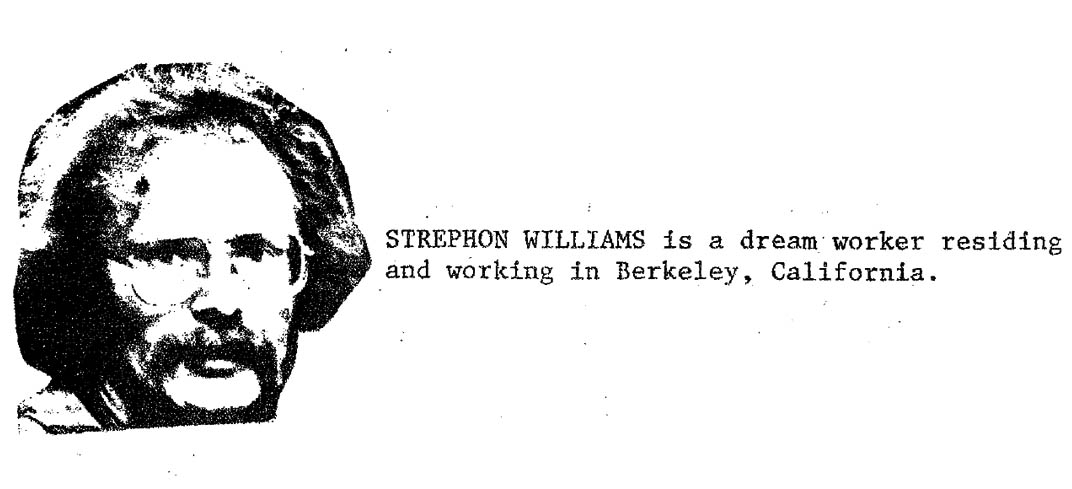Editor's Note: The following material has been condensed and reorganized from an interview with Stephen LaBerge by Keith Thompson, which appeared in the Fall 1982 edition of the Esalen Catalog. It was reorganized here in the Coat of Many Colors with the permission of Stephen LaBerge.
One of the main tasks facing laboratory researchers into lucid dreaming is to characterize the psychophysiology - the conditions under which lucid dreaming takes place normally. We're currently studying half a dozen subjects the Sleep Lab (the Dept. of Psychiatry in Sleep Center, Stanford University) to understand when and under what conditions lucid dreaming happens. Lucid dreaming is an untapped human capacity which hasn't been developed because we haven't been educated for it.
For example, turning on a tape recording saying, "This is a dream" automatically when the instrument registers the onset of REM sleep has worked to some extent, and we feel we can refine this approach if we find out exactly when in the REM cycle the potential for lucidity is greatest. So our broadest experimental work is the continuing characterization of the phenomenology of lucid dreaming, as well as developing techniques for making the state available to everyone.
Even at the current stage of development, some lucid dreamers like myself can remember to perform predetermined actions in the dream and signal the researchers awake in the lab, while still asleep in the dream. We're now able to verify these reports with the physiological measurements of the sleeping body. Because of these developments we're now able to validate these once subjective reports in a way that makes the whole endeavor scientific. Now subjects can go into the dream world and do experiments, as explorers, observers, and participants of their dream experience. So it has now become possible to explore and map the dream world in a much more methodical fashion than has been possible before.
In the lab, we've found that when a person moves his "dream eyes", his physical eyes move or oscillate as well; when he moves his "dream muscles", his physical muscles show a similar pattern of activity, though suppressed somewhat. There's reason to believe there's direct correspondence between what a person does with his "dream body" and what's actually going on in the brain. In an experiment we did with singing and counting, we found that shifts in brain activity were the same when people dreamed of singing or counting as when they actually were performing these tasks. When we compared it with when people imagined they were singing or counting, there were hardly any shifts in brain activity. So lucid dreaming is a lot more like really doing an activity than imagining it, which fits with the experiential reality of lucid dreaming.
For this reason alone, it seems to me that one important area of application for lucid dreaming may well be in the area I call "psychosomatic integration". Suppose a subject is invited to have a (lucid) dream where he sees himself as whole and integrated - would this in fact facilitate healing in just as clear a way as the singing/counting example indicates? This is an area worth studying. It suggests that REM sleep can be used for self-regulation of health and well-being. REM sleep contains the largest physiological variability of any period of one's daily functioning, so this means it has the greatest potential for alterations of one's physiology in a self-directed way. However, probably the strongest area for application of lucid dreaming at this point is for psychological integration. In gestalt terms, lucid dreams allow you to put on a character, a part of yourself, and accept this part of yourself, thus allowing integration. Lucid dreams allow self-confrontation and self-integration, giving you a chance to face and accept those parts of yourself that you might otherwise reject and repress.
Let's say you have an old habit which comes up when you're frightened, which is to run away. In the usual dream state, we act in accord with our habits. But one thing the lucid dream allows is deliberate action, action based on reflection, so we can step back from a given situation and view the larger picture. So in a nightmare in which you were being pursued by a threatening mob, the running away response could be inhibited, and you could turn and face the conflict and resolve it. I've found that simply turning around and asking, "Who are you?" is a good way to approach a disturbing dream image - which recontextualizes it from "you're a terrible thing I've got to get away from" to "you're a part of myself I have curiosity about and am willing to give attention to". The attitude changes
from fearing an unknown, threatening aspect to exploring some part of yourself that needs attention and acceptance. In this way lucid dreaming can be seen as a kind of laboratory or classroom or playground for self-exploration in which you can try out various kinds of behavior or modes of being and see how they work. It allows an opportunity to experientially test John Lily's axiom about inner realities being belief-limited.
For instance, the Freudian notion that flying in dreams is a mask For unacceptable sexual desires is a belief limit, and experience in lucid dreaming suggests that flying can can have any number of symbolic levels. After all, once you can fly - why walk? Lucid dreamers often gain an additional sense of the possibilities of freedom in flying dreams. But there's also the issue of responsibility to balance the freedom we gain. One of the possible problems of lucid dreaming is the ego's attempt to control the entire field of action in the dream.
In a dream where you're being pursued by an ogre you could transform it into a frog, or simply turn and run or fly away, thus avoiding the confrontation at hand, the issue presented by the dream itself. It wouldn't resolve the issue with the ogre. Yeats said that "in dreams begin responsibility".
Lucid dreaming allows the dreamer to say, "I'm dreaming; this is all my creation," and it becomes difficult to avoid the sense of responsibility for the dream and what it represents. It is no longer possible to fall back on the Freudian explanation of dreams as unconseious material beyond our control. So it becomes necessary to work with every element of the dream as part of yourself, and not allow the ego to dictate easy solutions which don't resolve the issues at hand.
With this kind of context, it becomes difficult to disown any part of the dream, no matter how disturbing the image might be. People often feel in a lucid dream that some part of the dream experience is not from them, but from the "astral plane", or some other actual dimension apart from them. These people often try to get rid of these "entities" or aspects of their experience "Get thee behind me, Satan!" but in my experience, the repressed images always return in unexpected ways, often in physical illness.
Frankly, in the 600 some lucid dreams I've had and recorded, I've not yet had an experience in which I was convinced that any part of it was from anywhere but me. I'm open to the possibility of objective realities being contacted in a lucid dream, but that's an empirical matter that has to be tested out in the dream lab. Experiments in mutual dreaming would be one way to go about this.
In lucid dreams, our brain combines features of the normal, waking state of consciousness with the dream state of consciousness. I call it being awake fin your sleep. The brain is fully awake, so you are awake to the inner world. It appears that having been recently awake helps activate that kind of waking consciousness. One way we've discovered lucid dreams are initiated is that a person wakes up within a REM sleep period, makes a mental note of being awake, and then goes back to sleep immediately. At such times, lucid dreams are much more likely to occur. The period of wakefulness is enough to activate that part of the brain that's involved in a level of consciousness sufficient to note, "oh, I'm dreaming..." .
The use of consciousness in the dream state is the same as it is in the waking state - in the waking state, habit accounts for much of our lives, and the same is true in dreams. So much of our lives are taken up with habitual actions - fit's habit that makes it possible to spell a word without having to think about it, or start the car every morning. But when you find yourself driving to work when you really want to be going to visit a friend, you come back to yourself and say. "Wait a minute, what am I doing?" At that moment of consciousness, a more flexible and creative response is possible. It's the same in a dream there are times when it's valuable just to let your dream unfold, and other times when lucidity provides a different and equally useful quality of awareness. When I began to have frequent lucid dreams, I made an agreement with my unconscious to let me know when lucidity would be relevant, so I said to myself, "I want to realize I'm dreaming when it's wise."
One of the potentially most useful and important areas of application for lucid dreaming is what I call "transformation". Once you've been through the self acceptance level of lucid dreams, once you've faced your fears and accepted your ogres, new levels of self are open for exploration. If you were in a dream right now and you knew it was a dream, you would also know that the real dreamer, yourself, would be asleep in bed somewhere in the physical world, and that the person you thought you were in the dream was only a dream image.
This is the "dream ego", the person we think we are in the dream, a model of ourselves. It is not, however, who we really are. In the non-lucid dream, the dream ego image is not distinct from the dreamer, but once the dream becomes lucid, the dreamer knows the dream ego is just an image, a working model. Once you've got control through lucidity, it becomes possible to work with surrendering control of a part of yourself beyond your model. of yourself, beyond your usual ego boundaries. In short, it becomes possible to explore what else there is in you beyond what you already know. This opens to the realm of transpersonal experiences where you literally know that the person you were experiencing yourself to be is not the whole you. Your being expands to include more dimensions. Often there's the experience of expanding to include the entire cosmos.
These kinds of lucid experiences can serve to awaken us to the possibility of higher and deeper levels of consciousness. One thing that prevents us from expanding consciousness is the false assumption that we are already fully developed and awake.












